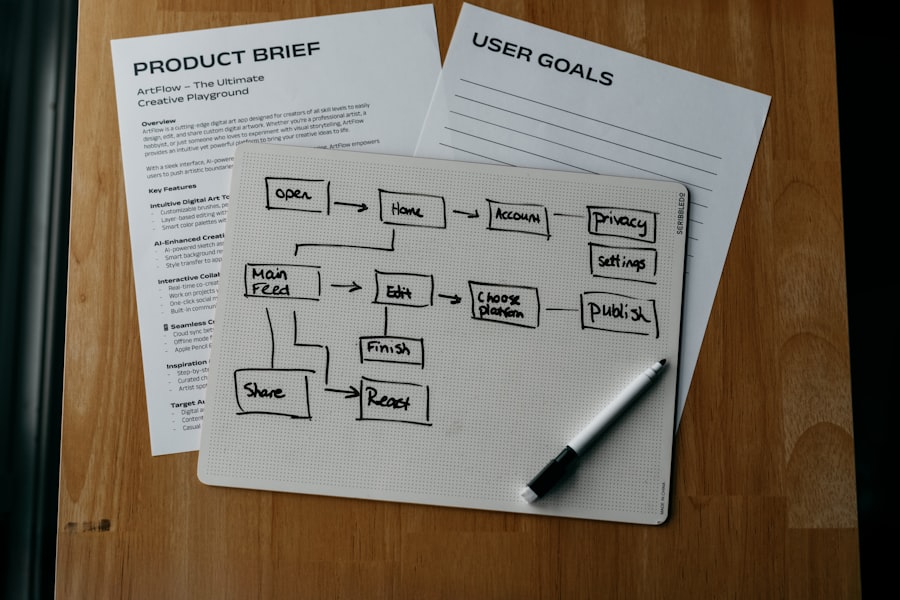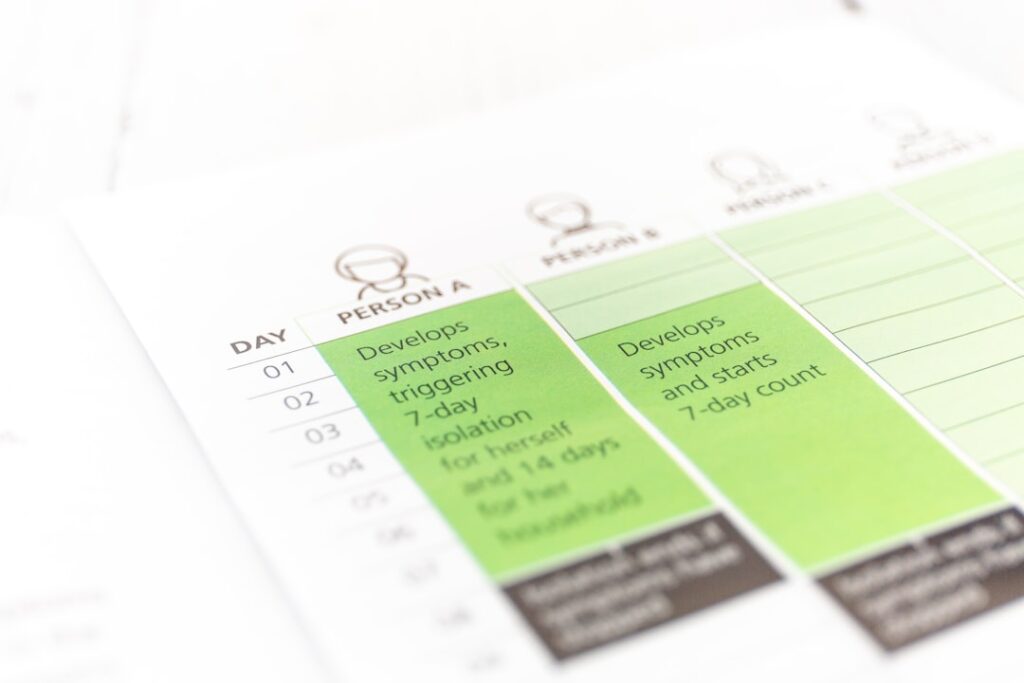As I delve into the intricacies of GDPR compliance, I find it essential to grasp the fundamental principles that underpin this regulation. The General Data Protection Regulation (GDPR) was enacted by the European Union to enhance individuals’ control over their personal data and to unify data protection laws across Europe. This regulation applies to any organization that processes the personal data of EU citizens, regardless of where the organization is based.
Understanding GDPR compliance is not merely about adhering to legal requirements; it is about fostering a culture of respect for privacy and data protection within an organization. The core tenets of GDPR revolve around transparency, accountability, and the rights of individuals. Organizations must be clear about how they collect, use, and store personal data.
This transparency builds trust with customers and stakeholders, which is invaluable in today’s data-driven world. Moreover, accountability is crucial; organizations must not only comply with the regulations but also demonstrate their compliance through documented processes and practices. As I navigate through the complexities of GDPR, I realize that it is not just a set of rules but a framework that encourages ethical data handling and prioritizes the rights of individuals.
Key Takeaways
- GDPR compliance is essential for businesses operating in the EU or handling EU citizen data, and non-compliance can result in hefty fines.
- The appointment of a Data Protection Officer (DPO) is mandatory for certain organizations under GDPR, and they play a crucial role in ensuring compliance with data protection regulations.
- A Data Processing Agreement is a key document that outlines the responsibilities of data controllers and processors, and it is essential for GDPR compliance.
- Consent management is a critical aspect of GDPR compliance, and businesses must ensure that they obtain valid consent for processing personal data.
- Data breach notification is mandatory under GDPR, and organizations must report any data breaches to the relevant supervisory authority within 72 hours of becoming aware of the breach.
Data Protection Officer (DPO) Appointment
In my exploration of GDPR compliance, I have come to understand the pivotal role of the Data Protection Officer (DPO). Appointing a DPO is not just a regulatory requirement for certain organizations; it is a strategic move that can significantly enhance an organization’s data protection efforts. The DPO serves as a point of contact for data subjects and supervisory authorities, ensuring that the organization adheres to GDPR principles.
This role requires a deep understanding of data protection laws and practices, as well as the ability to communicate effectively with various stakeholders. The responsibilities of a DPO extend beyond mere compliance checks. They are tasked with conducting regular audits, providing training to staff, and advising on data protection impact assessments.
As I reflect on the importance of this role, I recognize that a well-appointed DPO can help cultivate a culture of privacy within an organization. By being proactive rather than reactive, the DPO can identify potential risks and implement measures to mitigate them before they escalate into significant issues. This foresight not only protects the organization from potential fines but also enhances its reputation in the eyes of customers and partners.
Data Processing Agreement

As I continue my journey through GDPR compliance, I encounter the concept of Data Processing Agreements (DPAs). A DPA is a legally binding document that outlines the responsibilities and obligations of both data controllers and data processors when handling personal data. This agreement is crucial for ensuring that all parties involved in data processing understand their roles and comply with GDPR requirements.
It serves as a safeguard for both the organization and the individuals whose data is being processed. In drafting a DPA, I realize that clarity is paramount. The agreement should specify the nature and purpose of data processing, the types of personal data involved, and the duration of processing activities.
Additionally, it should outline security measures that will be implemented to protect personal data from unauthorized access or breaches. By establishing these parameters, organizations can mitigate risks associated with data processing and ensure that they are held accountable for their actions. As I reflect on this aspect of GDPR compliance, I understand that a well-structured DPA not only protects personal data but also fosters trust between organizations and their clients.
Consent Management
Navigating the landscape of consent management under GDPR has been an enlightening experience for me. Consent is a cornerstone of GDPR compliance, as it empowers individuals to have control over their personal data. Organizations must obtain explicit consent from individuals before processing their data, which means that consent must be informed, specific, and freely given.
This requirement challenges me to rethink how organizations approach customer interactions and data collection practices. In my exploration of consent management strategies, I have discovered that transparency is key. Organizations should provide clear information about what data is being collected, how it will be used, and who it will be shared with.
Additionally, I have learned that consent should be easy to withdraw at any time, allowing individuals to maintain control over their personal information. Implementing effective consent management practices not only ensures compliance with GDPR but also enhances customer trust and loyalty. As I reflect on this aspect, I recognize that consent management is not just a checkbox exercise; it is an opportunity for organizations to engage meaningfully with their customers.
Data Breach Notification
The prospect of a data breach is daunting for any organization, and understanding the requirements for breach notification under GDPR has been an eye-opening experience for me. In the event of a data breach that poses a risk to individuals’ rights and freedoms, organizations are required to notify the relevant supervisory authority within 72 hours. This tight timeframe emphasizes the importance of having robust incident response plans in place.
As I consider this requirement, I realize that preparation is key to minimizing the impact of a breach. Moreover, organizations must also inform affected individuals if there is a high risk to their rights and freedoms. This obligation underscores the importance of transparency in maintaining trust with customers.
As I reflect on this aspect of GDPR compliance, I recognize that effective communication during a breach can significantly influence how stakeholders perceive an organization’s commitment to data protection. By being proactive in their response and transparent in their communications, organizations can mitigate reputational damage and demonstrate their dedication to safeguarding personal data.
Right to Access and Data Portability

The rights granted to individuals under GDPR are fundamental to its purpose, and understanding the right to access and data portability has been particularly enlightening for me. The right to access allows individuals to request confirmation from organizations about whether their personal data is being processed. If so, they have the right to obtain a copy of that data along with information about its processing purposes, retention periods, and recipients.
This right empowers individuals by giving them insight into how their data is used. Data portability further enhances this empowerment by allowing individuals to request their personal data in a structured, commonly used format so they can transfer it to another service provider if they choose. As I reflect on these rights, I recognize that they not only promote transparency but also encourage competition among service providers.
Organizations must be prepared to respond promptly to access requests and ensure that they have systems in place to facilitate data portability. This commitment to individual rights not only aligns with GDPR compliance but also fosters a customer-centric approach that can lead to greater loyalty and satisfaction.
Privacy Policy and Cookie Consent
Crafting a comprehensive privacy policy has become an essential task for me as I navigate GDPR compliance. A privacy policy serves as a public declaration of how an organization collects, uses, stores, and protects personal data. It should be written in clear language that is easily understandable by individuals without legal expertise.
As I work on developing this document, I realize that it must address various aspects such as the types of personal data collected, the legal basis for processing, retention periods, and individuals’ rights under GDPR. In addition to privacy policies, cookie consent has emerged as another critical area of focus. With the increasing use of cookies for tracking user behavior online, organizations must obtain explicit consent from users before placing cookies on their devices.
This requirement has prompted me to consider how organizations can balance effective marketing strategies with respect for user privacy. Implementing cookie consent banners that provide clear options for users can enhance transparency while allowing organizations to gather valuable insights into user behavior responsibly.
Data Protection Impact Assessment
Conducting Data Protection Impact Assessments (DPIAs) has become an integral part of my approach to GDPR compliance. A DPIA is a process designed to help organizations identify and mitigate risks associated with data processing activities that may impact individuals’ privacy rights. As I engage in this process, I recognize its importance in ensuring that privacy considerations are integrated into project planning from the outset.
The DPIA process involves assessing the necessity and proportionality of data processing activities while considering potential risks to individuals’ rights and freedoms. By identifying these risks early on, organizations can implement measures to mitigate them before they escalate into significant issues. As I reflect on my experiences with DPIAs, I understand that this proactive approach not only enhances compliance with GDPR but also demonstrates an organization’s commitment to protecting personal data.
Ultimately, conducting DPIAs fosters a culture of accountability and responsibility within organizations as they navigate the complexities of data protection in today’s digital landscape. In conclusion, my journey through understanding GDPR compliance has been both challenging and rewarding. Each aspect—from appointing a DPO to conducting DPIAs—has reinforced the importance of prioritizing individual rights and fostering transparency in data handling practices.
As organizations continue to adapt to this evolving regulatory landscape, embracing these principles will be crucial for building trust with customers and ensuring long-term success in an increasingly data-driven world.
When ensuring GDPR compliance for your WordPress site, it’s crucial to consider various aspects such as data collection, user consent, and privacy policies. A related article that can provide additional insights is about sending emails using CyberPanel, which is an important aspect of managing user data and communications. Understanding how to securely send emails can help maintain compliance with GDPR regulations by ensuring that user data is handled appropriately. For more information, you can read the article on sending email using CyberPanel. This resource can guide you in setting up a secure email system that aligns with GDPR requirements.
FAQs
What is GDPR compliance?
GDPR stands for General Data Protection Regulation, which is a set of regulations designed to protect the personal data and privacy of individuals within the European Union (EU). GDPR compliance refers to the process of ensuring that businesses and websites are in compliance with these regulations.
Why is GDPR compliance important for WordPress sites?
WordPress sites often collect and process personal data, such as names, email addresses, and IP addresses. It is important for WordPress site owners to ensure GDPR compliance to protect the privacy and data of their users, especially if they have visitors from the EU.
What are the key requirements for GDPR compliance for WordPress sites?
Key requirements for GDPR compliance for WordPress sites include obtaining explicit consent for data collection, providing users with the ability to access, rectify, and erase their personal data, and implementing security measures to protect personal data.
What are some steps to achieve GDPR compliance for WordPress sites?
Some steps to achieve GDPR compliance for WordPress sites include updating privacy policies, obtaining consent for data collection, implementing data access and erasure requests, and ensuring the security of personal data through encryption and other measures.
Are there any GDPR compliance plugins available for WordPress sites?
Yes, there are several GDPR compliance plugins available for WordPress sites that can help with tasks such as cookie consent management, data access requests, and privacy policy updates. It is important to research and choose a reputable plugin that meets the specific needs of the website.
What are the potential consequences of non-compliance with GDPR for WordPress sites?
Non-compliance with GDPR for WordPress sites can result in significant fines and penalties, as well as damage to the reputation and trust of the website and its users. It is important for WordPress site owners to take GDPR compliance seriously and ensure that they are meeting the necessary requirements.
